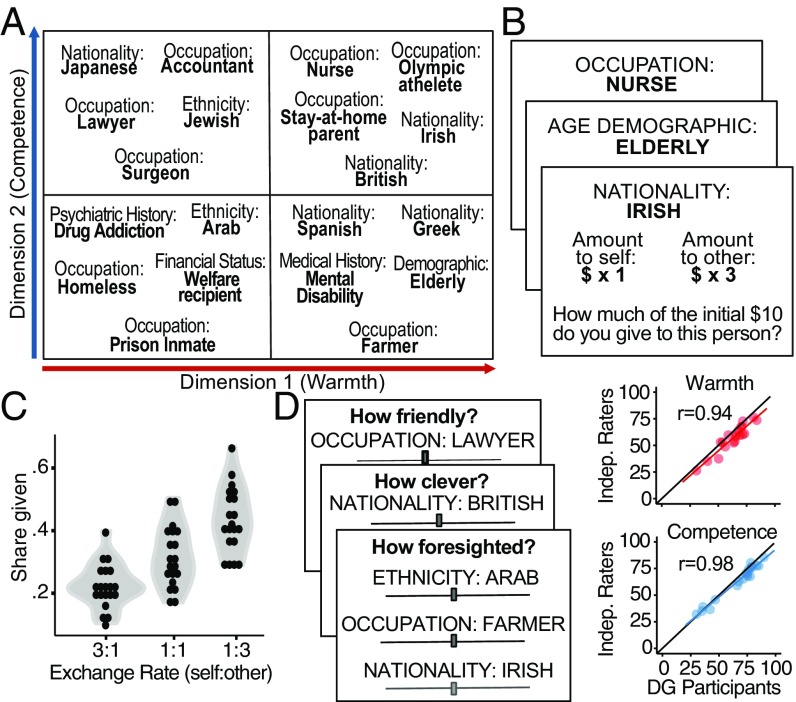Fig. 1.
Documenting treatment disparities in an experimental setting. (A) Twenty social groups selected to span the warmth–competence space. (B) DG paradigm varying recipients as well as costs/benefits of giving, manipulated by applying separate multiplier rates (ms/mo) on the amounts allocated to the participant and recipient, respectively. Three exchange rates were used (1:3, 1:1, and 3:1). (C) Each point represents the average share given to a recipient at the indicated exchange rate. Both recipient group membership and exchange rate significantly affected the share given, where share given is defined as πo/(πs + πo), πo is the amount given to recipient, and πs is the amount kept by participant (both P < 10−10). (D, Left) Social perception ratings were elicited using a continuous scale (0–100) and factor-analyzed, revealing dimensions of warmth and competence. (D, Right) Ratings of the same recipients by participants in study 1a and study 1b were highly correlated (warmth: r = 0.94; competence: r = 0.98). Indep., independent.

